The Event Horizon Telescope (EHT) — the worldwide collaboration that produced the first image of a black hole in 2019 — has produced a new image showing details of the magnetic fields in the region closest to the supermassive black hole at the core of the galaxy M87. The new work is providing astronomers with important clues about how powerful jets of material can be produced in that region.
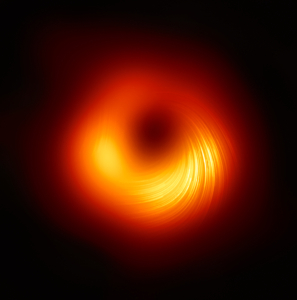
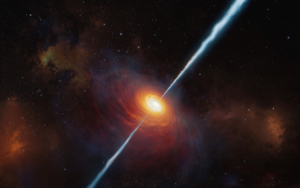
Most Distant Cosmic Jet Providing Clues About Early Universe
Astronomers using the VLA and VLBA have found the most distant cosmic jet yet discovered, material propelled at nearly the speed of light by a supermassive black hole in the core of a galaxy some 13 billion light-years from Earth.
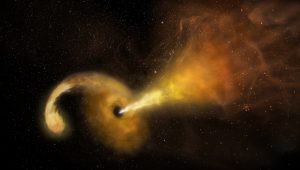
VLA Helps Astronomers Make New Discoveries About Star-Shredding Events
New studies using the VLA and other telescopes have added to our knowledge of what happens when a black hole shreds a star, but also have raised new questions that astronomers must tackle.

Quasar Discovery Sets New Distance Record
Astronomers using the Atacama Large Millimeter/submillimeter Array (ALMA), along with other telescopes, have discovered the most distant quasar yet found. The bright quasar, powered by a supermassive black hole at the core of a galaxy, is seen as it was only 670 million years after the Big Bang, and is providing valuable clues about how such huge black holes and their host galaxies formed in the early Universe.
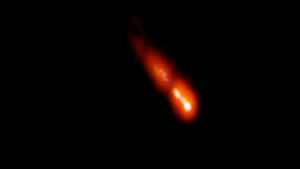
IMAGE RELEASE: A Blazar In the Early Universe
Observations with the continent-wide Very Long Baseline Array (VLBA) reveal previously unseen details in a jet of material ejected from the core of a galaxy seen as it was when the universe was only about 7 percent of its current age.
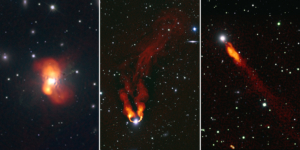
IMAGE RELEASE: Galaxies in the Perseus Cluster
New VLA images show how the crowded environment of a cluster of galaxies affects the individual galaxies, helping astronomers better understand some of the complex details of such an environment.





